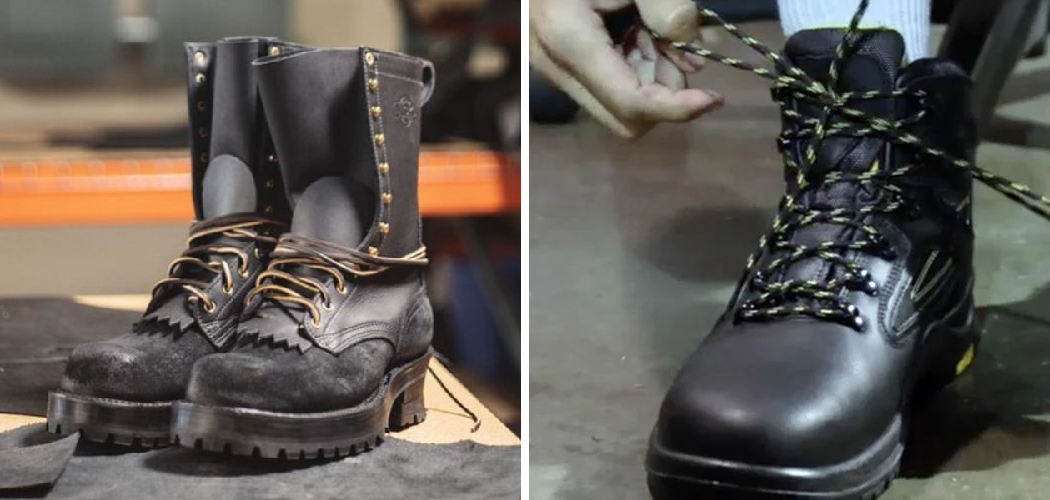Making steel toe shoes comfortable is essential for anyone who spends long hours on their feet in demanding environments.
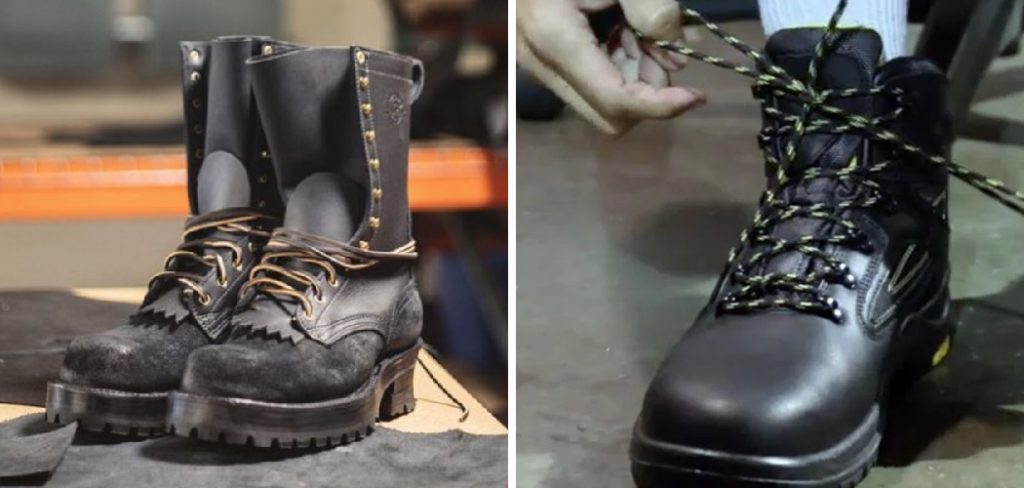
Steel toe shoes provide crucial protection in various industries, but their robust construction can often lead to discomfort if not properly addressed.
This guide aims to provide practical tips and techniques to enhance the comfort of your steel toe shoes, ensuring you can perform your duties without the distraction of sore feet.
We’ll explore methods for how to make steel toe shoes comfortable, using high-quality insoles, and employing specific lacing techniques to alleviate pressure points. Additionally, we’ll discuss the importance of breaking in new shoes gradually and maintaining them to prevent issues like blisters and chafing.
By understanding how to balance safety with comfort, you can enjoy the benefits of durable footwear without sacrificing your well-being. Whether you’re on a construction site, in a warehouse, or navigating any tough terrain, these strategies will help you stay comfortable and focused throughout your workday.
Importance of Comfort in Steel Toe Shoes
The importance of comfort in steel toe shoes cannot be overstated. Workers in construction, manufacturing, and other physically demanding fields often spend extended periods on their feet, making it essential that their footwear provides not only protection but also comfort.
Comfortable steel toe shoes reduce the risk of foot fatigue, which can lead to decreased productivity and increased risk of accidents.
When shoes are uncomfortable, workers may experience pain that distracts them from their tasks, potentially compromising their safety. Additionally, prolonged discomfort can lead to chronic issues such as plantar fasciitis, joint pain, and back problems, further impacting overall health and job performance.
Ensuring that steel toe shoes fit well and provide adequate support helps maintain morale and efficiency, allowing workers to perform at their best and maintain a higher level of focus and alertness throughout their shifts. Comfort in steel toe shoes, therefore, is essential for both immediate well-being and long-term health.
Challenges of Wearing Steel Toe Shoes
Despite their numerous benefits, wearing steel toe shoes can present several challenges. One of the most common issues is the weight of the shoes.

Steel toe shoes are typically heavier than regular footwear, which can cause fatigue and discomfort over extended periods. This added weight can strain your muscles and joints, potentially leading to pain in the feet, legs, and lower back.
Additionally, the rigid structure of the steel toe cap, while necessary for protection, can impose pressure on the toes, resulting in discomfort or bruising, especially if the shoes are not properly fitted.
Another challenge is the limited breathability of many steel toe shoes. The durable materials used in their construction, such as leather and synthetic compounds, can trap heat and moisture, leading to sweaty, uncomfortable feet and increasing the risk of blisters and fungal infections.
Finally, breaking in new steel toe shoes can be particularly tough; the initial stiffness can cause chafing and soreness until the shoes conform more comfortably to the shape of your feet over time.
Awareness of these challenges and proactive steps to mitigate them can make a significant difference in your overall comfort and work experience.
Understanding Steel Toe Shoes
Steel toe shoes are specifically designed to provide superior protection in environments where hazards such as heavy falling or rolling objects, sharp materials, and potentially dangerous equipment are present.
The key feature of these shoes is the steel toe cap, which is embedded within the shoe’s toe box to safeguard the wearer’s toes from injury.
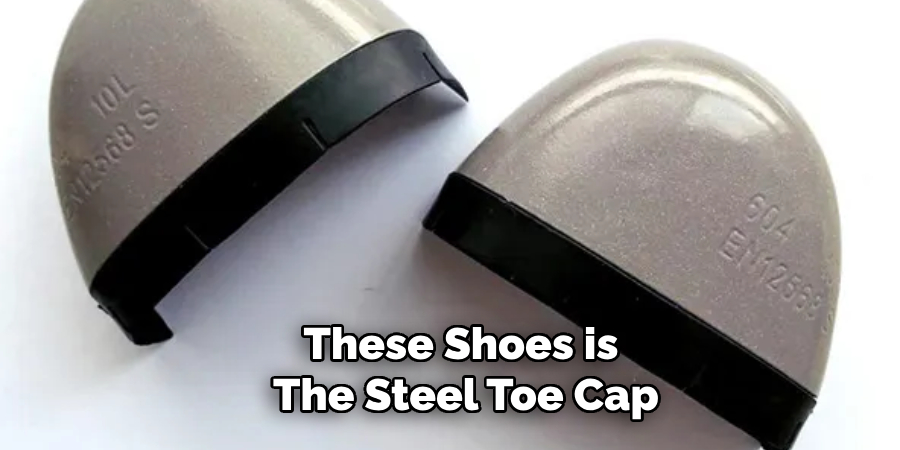
This protective cap is engineered to withstand significant impact and compression, making steel toe shoes indispensable in various occupations, including construction, manufacturing, and logistics.
However, beyond just the steel toe cap, these shoes often incorporate additional safety features like slip-resistant soles, waterproofing, and insulation against extreme temperatures.
Understanding the specific needs of your work environment can help you choose the right steel toe shoes, ensuring that they meet safety standards while also being tailored to the unique demands of your job.
Proper fit is also crucial; steel toe shoes should offer adequate space in the toe box to prevent rubbing and pressure while providing firm support around the heel and arch. By comprehending the design and functionality of steel toe shoes, workers can better appreciate their importance and make informed choices that enhance both safety and comfort on the job.
Common Issues with Steel Toe Shoes
Despite the numerous benefits that steel toe shoes offer in terms of safety and protection, wearers often encounter several common issues that can affect their overall comfort and usability.
One of the most frequently reported problems is the improper fit, particularly around the toe box. Since the steel toe cap is rigid, it does not conform to the foot’s shape, which can cause rubbing and pressure points, leading to blisters and sore toes.
Another issue is the weight of steel toe shoes. They are generally heavier than standard footwear, which can contribute to foot fatigue, especially during long shifts. This added weight can also place additional strain on the wearer’s lower back and legs, potentially leading to discomfort and pain over time.

Breathability is another concern with steel toe shoes. Many models are made from durable, but less breathable materials like leather or synthetic composites, which can trap heat and moisture. This lack of ventilation can result in sweaty feet, increasing the risk of fungal infections and general discomfort.
Furthermore, many steel toe shoes have limited flexibility, making them feel stiff and uncomfortable until they are adequately broken in. This initial stiffness can cause chafing and soreness as the shoes gradually conform to the wearer’s feet.
Understanding these common issues is the first step in taking proactive measures to mitigate them, ensuring that workers can benefit from the protective features of steel toe shoes without compromising on comfort.
Factors Contributing to Discomfort
Several factors can contribute to the discomfort experienced when wearing steel toe shoes. One of the primary factors is the improper fit. If the shoes are too tight, it can lead to pinching, restricted blood flow, and blisters, particularly around the steel toe area.
Conversely, if the shoes are too loose, the feet can slide around inside the shoe, causing friction and increasing the risk of chafing and calluses. Another contributing factor is the lack of cushioning and arch support.
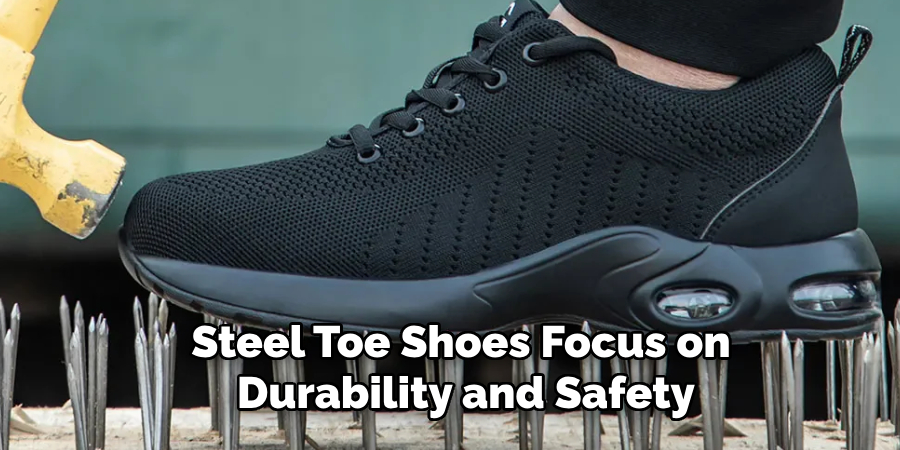
Many steel toe shoes focus on durability and safety, sometimes at the expense of interior comfort features, which can lead to foot pain and fatigue.
The materials used in the construction of steel toe shoes can also play a significant role. Non-breathable materials can trap heat and moisture, resulting in sweaty and uncomfortable feet.
The added weight of the steel toe cap and other protective elements can cause additional strain, making the shoes heavier and more cumbersome to wear for extended periods.
10 Methods How to Make Steel Toe Shoes Comfortable
1. Choosing the Right Fit
The foundation of comfort in steel toe shoes starts with selecting the right fit. It’s crucial to ensure that your shoes are neither too tight nor too loose, as improper fit can lead to discomfort and even foot injuries. When shopping for steel toe shoes, try them on later in the day when your feet are naturally more swollen.
This helps to ensure a fit that accommodates foot expansion during work. Pay attention to the width as well as the length; many steel toe shoes come in various widths to cater to different foot shapes.
Ensure there is enough room in the toe box to wiggle your toes freely without feeling cramped. Additionally, wearing the same type of socks you’ll use on the job while trying on the shoes can provide a more accurate fit.
Investing time in finding the perfect fit prevents blisters, pinching, and other forms of discomfort associated with poorly fitting shoes.
2. Breaking Them In
Like most new footwear, steel toe shoes require a break-in period to become comfortable. To break in your shoes effectively, start by wearing them for short periods around the house or during light activities. Gradually increase the duration and intensity of wear over a week or two.
This gradual process allows the material to soften and mold to the shape of your feet, reducing the risk of blisters and sore spots. During this period, you might also use shoe stretchers to help expedite the process, particularly if the shoes feel tight in specific areas.
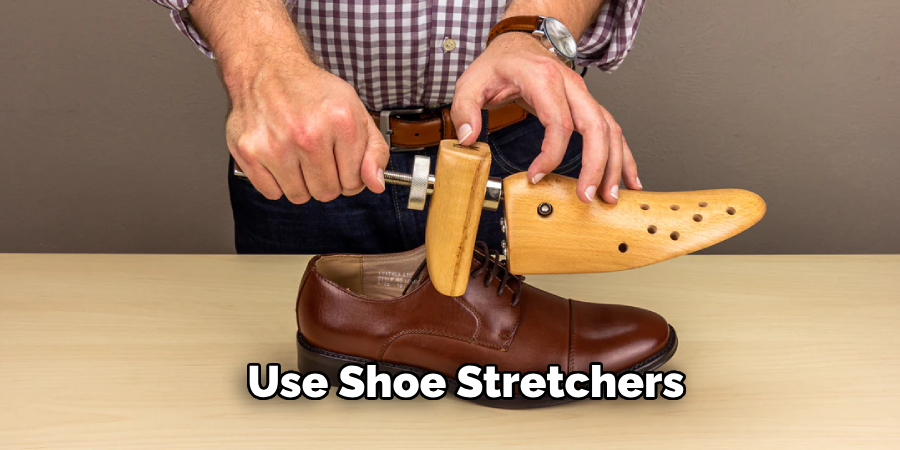
Patience is key, as rushing the break-in process can lead to significant discomfort and foot issues.
3. Adding Quality Insoles
Replacing the insoles that come with your steel toe shoes with high-quality insoles can significantly enhance comfort. Many steel toe shoes come with basic insoles that lack sufficient cushioning and support.
Custom or orthotic insoles designed for your foot type can provide better arch support, cushioning, and overall comfort. Look for insoles made from materials that offer good shock absorption and moisture-wicking properties to keep your feet dry and reduce friction.
Insoles with gel or memory foam components can be particularly beneficial, providing tailored comfort and support throughout your workday. When selecting insoles, ensure they fit well within your shoes without crowding the toe box.
4. Wearing Appropriate Socks
The type of socks you wear can greatly influence the comfort of your steel toe shoes. Opt for socks made from moisture-wicking materials like merino wool or synthetic blends, which help keep your feet dry and reduce the risk of blisters.
Padded or cushioned socks can provide extra comfort by adding a layer of softness and reducing friction points.
Compression socks are another good option as they improve circulation and reduce swelling, which can be particularly beneficial during long hours of standing or walking. Avoid cotton socks, as they tend to retain moisture, leading to damp feet and increased discomfort.
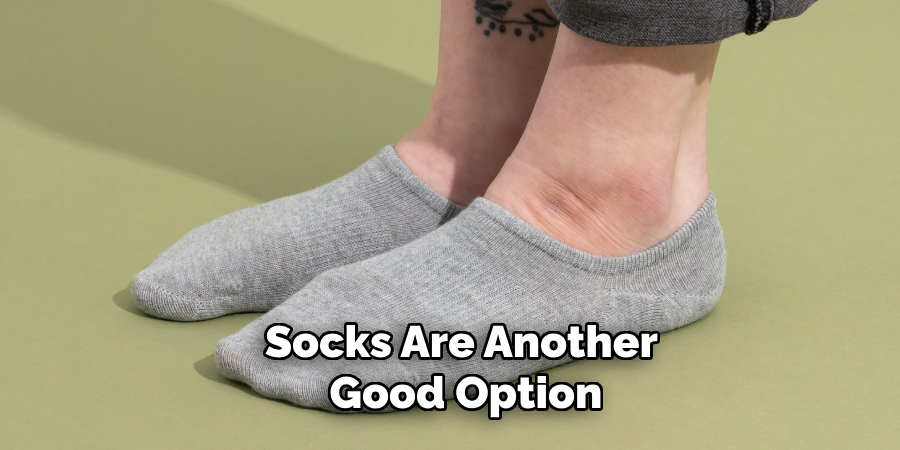
5. Using Anti-Friction Balms
Anti-friction balms are excellent for preventing blisters and hot spots that can develop from the friction between your feet and the shoes. Apply the balm to areas of your feet that are prone to rubbing, such as the heels, toes, and sides.
The balm creates a slick surface that reduces friction and allows your feet to move more smoothly within the shoes. There are various types of anti-friction products available, including sticks, powders, and gels. Regular application, especially during the initial break-in period, can make a significant difference in overall comfort.
6. Adjusting Laces Properly
How you lace your steel toe shoes can impact their comfort. Ensure that the laces are adjusted to provide a snug fit without being overly tight. The lacing should secure your feet firmly, preventing them from sliding forward and causing your toes to hit the steel cap.
Experiment with different lacing techniques to find one that offers the best combination of support and comfort. For instance, if you experience pressure on the top of your foot, you can use the “parallel lacing” method to relieve tension. Proper lacing also helps to evenly distribute pressure across the foot, reducing the risk of discomfort and foot fatigue.
7. Using Toe Guards or Pads
If the steel toe cap is causing discomfort, using toe guards or pads can help alleviate pressure and cushion your toes.
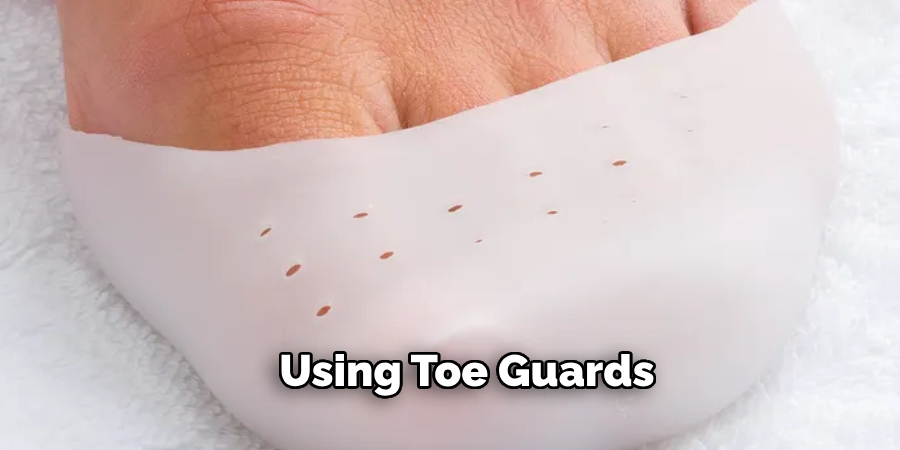
Toe guards are small, cushioned inserts that fit inside the toe box, providing a buffer between your toes and the steel cap. These guards can prevent the painful pressure and rubbing that can occur with prolonged wear. Alternatively, gel toe caps or sleeves can be used to protect individual toes.
These products are particularly useful if you have specific pressure points or if your toes are prone to blisters.
8. Stretching the Shoes
If your steel toe shoes are too tight, stretching them can provide extra room and improve comfort. There are several methods for stretching shoes.
One effective technique is to use a shoe stretcher, which can be adjusted to widen the shoe gradually. For a DIY approach, you can fill ziplock bags with water, place them inside the shoes, and freeze them overnight.
As the water freezes, it expands, gently stretching the shoe. Another method involves wearing thick socks and using a hairdryer to heat the tight areas while flexing your feet to stretch the material. These stretching techniques can provide a more customized fit, reducing tightness and improving overall comfort.
9. Using Foot Powder
Foot powder can help keep your feet dry and reduce friction within the shoes, enhancing comfort.
Applying foot powder before putting on your socks and shoes can absorb excess moisture, preventing the build-up of sweat that leads to discomfort and blisters. Look for foot powders that contain antifungal and antibacterial properties to keep your feet healthy and odor-free.
Cornstarch-based powders or talc-free options are ideal for sensitive skin. Regular use of foot powder is especially beneficial for those working in hot or humid environments where feet are more prone to sweating.
10. Rotating Shoes
Rotating between different pairs of shoes can prevent foot fatigue and prolong the life of your steel toe shoes.
Wearing the same pair of shoes every day can cause excessive wear and tear and doesn’t give the materials enough time to recover and maintain their shape. By alternating between at least two pairs of steel toe shoes, you allow each pair to dry out and retain their structural integrity.
This practice also helps distribute the stress and pressure on your feet differently each day, reducing the risk of repetitive strain injuries and enhancing overall comfort.
Common Mistakes to Avoid
When it comes to wearing steel toe shoes, several common mistakes can compromise comfort and safety. One significant mistake is choosing the wrong size. Ill-fitting shoes, whether too tight or too loose, can lead to blisters, pinching, and general discomfort.
Another frequent error is neglecting to break in new steel toe shoes. Wearing them for long hours straight away without allowing a gradual adaptation period can cause painful pressure points and blisters.
Moreover, failing to replace worn-out insoles or ignoring the need for orthotic inserts can result in inadequate support and cushioning, contributing to foot fatigue and pain.
Another common mistake is wearing inappropriate socks. Cotton socks, which retain moisture, can exacerbate discomfort and lead to blisters. Instead, opt for moisture-wicking materials to keep your feet dry.
Additionally, not using anti-friction balms or toe guards when needed can result in increased friction and pressure, leading to hot spots and blisters. Incorrect lacing techniques can also affect comfort, as overly tight or loose laces can cause foot slippage or excessive pressure.
Conclusion
Ensuring the comfort and longevity of your steel toe shoes requires a combination of proper care, the right accessories, and mindful practices. By selecting the right size and gradually breaking in new shoes, you can prevent many common issues such as blisters and discomfort.
Utilizing moisture-wicking socks, anti-friction balms, and adjusting laces appropriately can further enhance your overall experience.
Moreover, employing techniques such as using toe guards, stretching methods, and rotating shoes will help maintain optimal comfort and prolong the life of your steel toe footwear.
Avoiding common mistakes, like wearing inappropriate socks or neglecting shoe maintenance, is crucial to enjoying the full benefits that steel toe shoes have to offer.
Through these comprehensive strategies, you can ensure your feet remain protected, comfortable, and well-supported throughout your workday.

